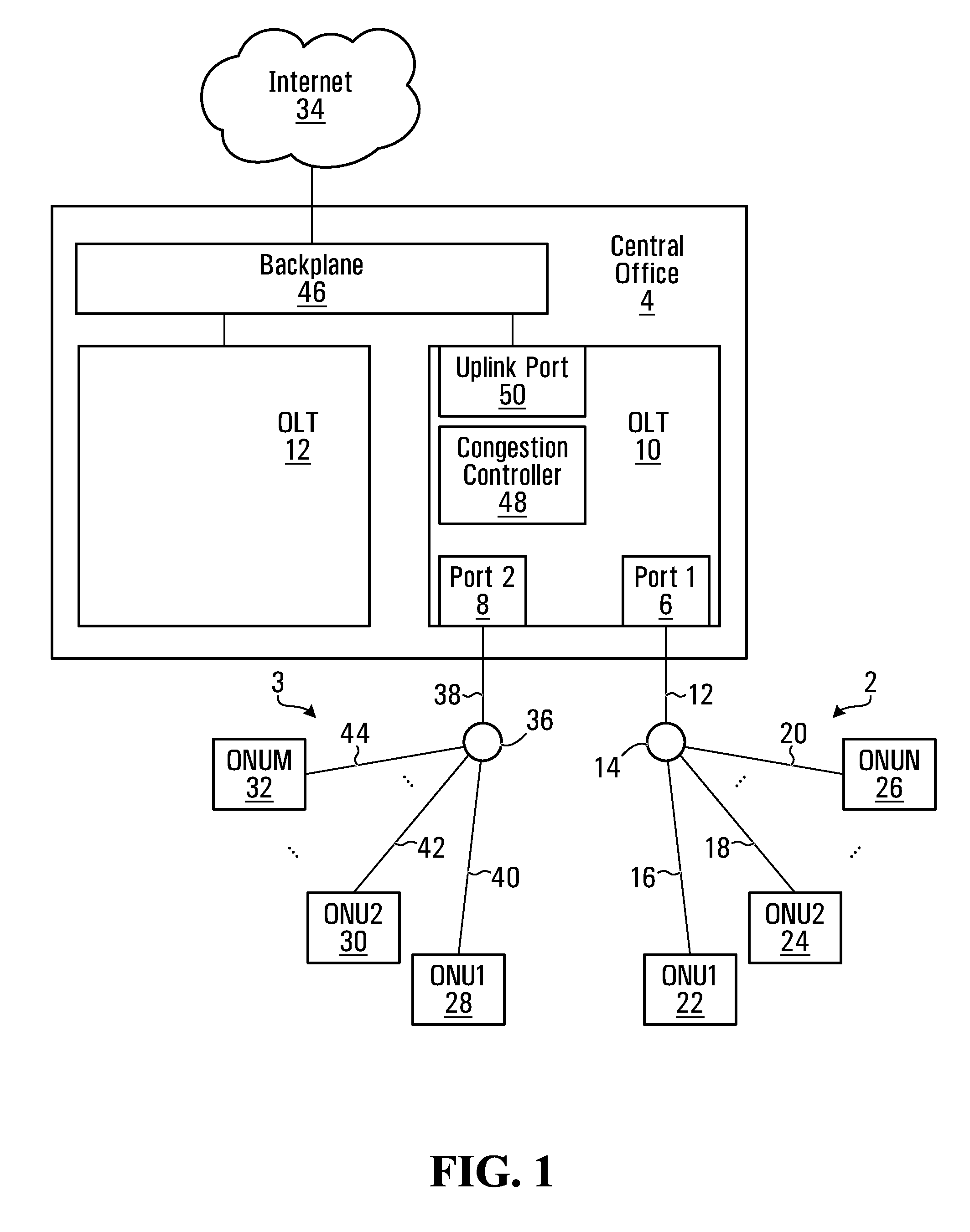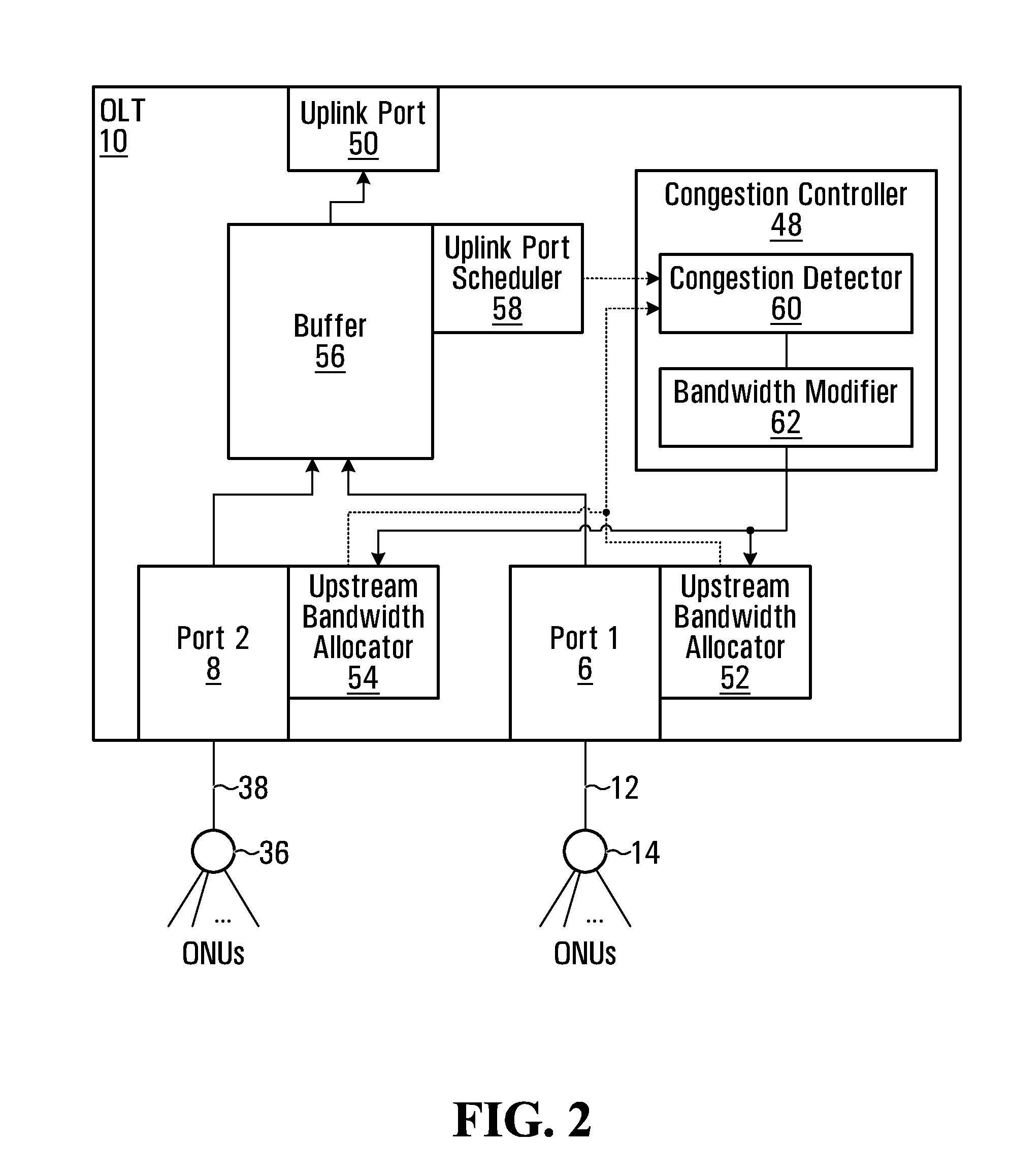Congestion control in an optical line terminal
a technology of optical line terminals and control devices, applied in data switching networks, frequency-division multiplexes, instruments, etc., can solve problems such as congestion and congestion in the ol
- Summary
- Abstract
- Description
- Claims
- Application Information
AI Technical Summary
Benefits of technology
Problems solved by technology
Method used
Image
Examples
Embodiment Construction
[0023]In general, there are disclosed methods and systems for managing congestion in an Optical Line Terminal (OLT). The OLT has a plurality of ports, each of which is used for communicating with at least one Optical Network Unit (ONU). Each of these ports has a respective enforced maximum upstream bandwidth. The OLT further includes an uplink port through which data received from each of the plurality of ports are transmitted. If it is determined that there is congestion of the data in the OLT queued for transmission through the uplink port, then the enforced maximum upstream bandwidth for at least one of the ports interfacing with the ONUs is modified. This can have the benefit of reducing congestion in the OLT, since the total amount of data received at the OLT from the ONUs can be reduced while the enforced maximum upstream bandwidth is modified. For example, in one example embodiment, a lower maximum upstream bandwidth may be enforced at each of the ports by reducing the number...
PUM
 Login to View More
Login to View More Abstract
Description
Claims
Application Information
 Login to View More
Login to View More - R&D
- Intellectual Property
- Life Sciences
- Materials
- Tech Scout
- Unparalleled Data Quality
- Higher Quality Content
- 60% Fewer Hallucinations
Browse by: Latest US Patents, China's latest patents, Technical Efficacy Thesaurus, Application Domain, Technology Topic, Popular Technical Reports.
© 2025 PatSnap. All rights reserved.Legal|Privacy policy|Modern Slavery Act Transparency Statement|Sitemap|About US| Contact US: help@patsnap.com



